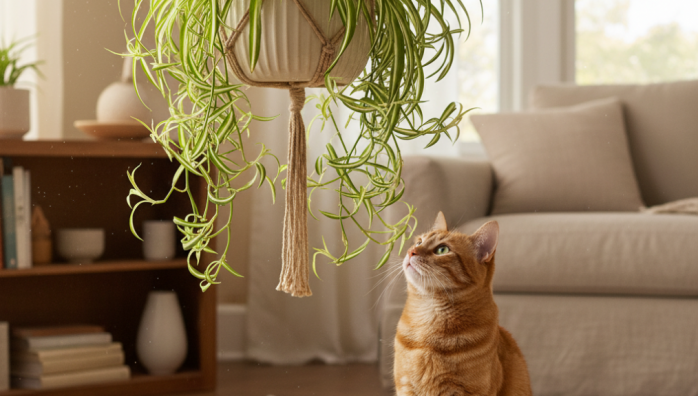Spider plants safe for cats
by admin in Pet Care Basics 13 - Last Update November 19, 2025

As someone who has shared my home with both a jungle of houseplants and a curious feline for over a decade, the question of plant toxicity is always front of mind. I remember the panic I felt when I first saw my new kitten, Leo, batting at and then chewing on the leaves of a plant I\'d just brought home. It\'s a heart-stopping moment for any pet parent. That experience sent me down a rabbit hole of research, and one of the first plants I confirmed as a \'win\' for our household was the humble spider plant.
My personal journey with cats and houseplants
Honestly, creating a pet-friendly indoor garden felt like a huge challenge at first. So many popular plants are surprisingly toxic to our furry friends. I had to re-home a gorgeous monstera and a beloved ZZ plant. But I was determined to have greenery. The spider plant (Chlorophytum comosum) kept coming up in my research as a safe bet, so I decided to give it a try. I watched Leo like a hawk at first, and to my relief, his occasional nibbling resulted in nothing more than a bit of playful enthusiasm.
So, are spider plants officially cat-friendly?
Yes, they are. According to trusted sources like the ASPCA (American Society for the Prevention of Cruelty to Animals), spider plants are non-toxic to cats, dogs, and horses. This was a huge relief for me. It means that if your cat decides to have a little chew, you don\'t need to panic about poisoning. It’s one of the most recommended plants for pet owners, and for good reason—it’s resilient, a fantastic air purifier, and thankfully, safe for our curious companions.
A word of caution about \'safe\'
Now, here\'s a distinction I learned over time: \'non-toxic\' doesn\'t always mean \'consequence-free\'. While spider plants won\'t poison your cat, they do contain compounds that can cause mild stomach upset if ingested in large quantities. Think of it like a person eating too much of a rich, non-poisonous food—you might get a tummy ache. For cats, this can manifest as mild vomiting or diarrhea. Interestingly, spider plants are also known to have a mild, harmless hallucinogenic effect on felines, similar to catnip, which is often why they are so attracted to them in the first place! This is what I noticed with Leo; he seemed drawn to it for a euphoric nibble now and then.
Tips for keeping your cat and spider plant happy together
Over the years, I\'ve found a good balance. Here’s what works for me and might help you, too:
- Location is key: I keep my main spider plant in a hanging basket, just out of easy reach. This minimizes temptation while still allowing its beautiful arching leaves to be on display.
- Offer a sacrifice: I keep a smaller, more accessible pot of cat grass nearby. This gives my cat a safe, designated plant to chew on, which often distracts him from my other greenery.
- Monitor consumption: Keep an eye on how much your cat is actually eating. A little nibble here and there is fine, but if they\'re mowing it down like a salad bar, it\'s best to move the plant.
Ultimately, having spider plants in my home has been a joy. They bring so much life to a space without bringing the stress and worry that toxic plants do. As with any aspect of pet care, it\'s about being informed and observant. While this has been my experience, I always recommend chatting with your vet if you have any specific concerns about your pet\'s health or diet.














